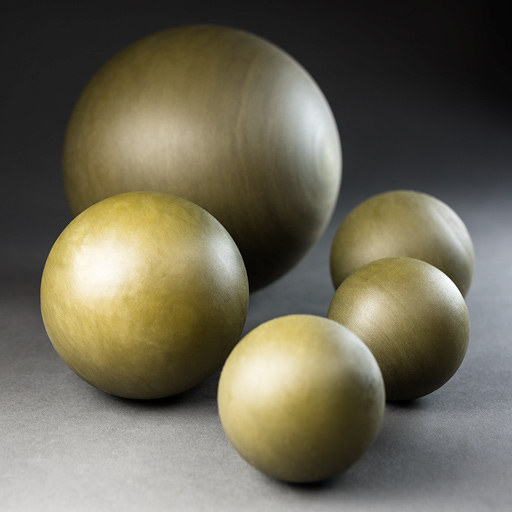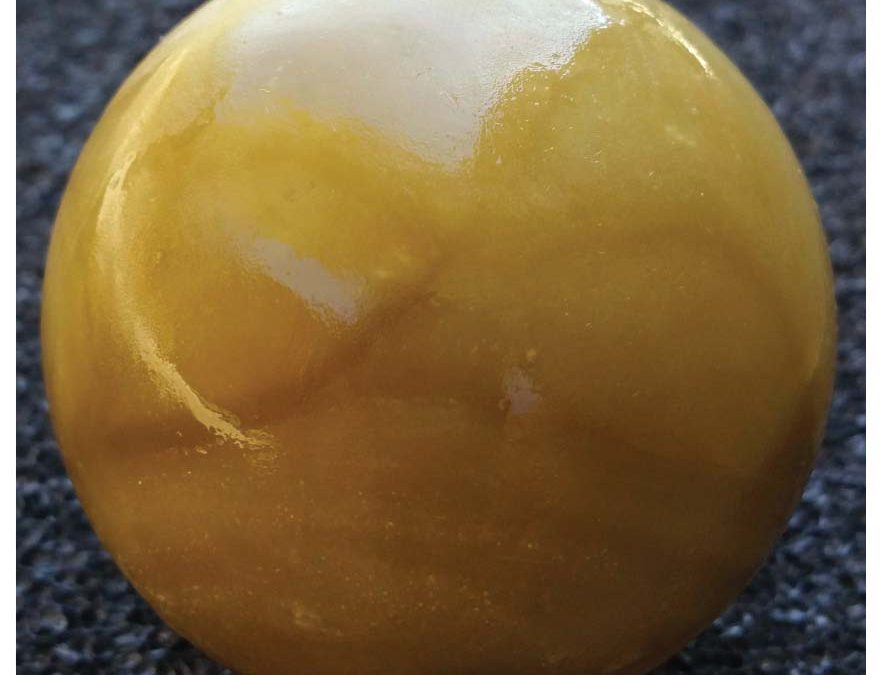
What’s In Your Ball Launcher?
Here’s the rundown on degradable balls:
Time: We consider a ball to be degradable if it disappears in hours to days. Other manufacturers consider weeks to months to qualify as degradable.
Specific Gravity (SG): The (apparent) density of the ball measured as g/cc³ with water as the reference of 1.0 g/cc³. SG is important as many operators want to match the SG of the ball to that of the production fluid. Our patent-pending polymer and metal balls both have an SG of 1.7 – generally considered the “sweet spot”.
Fresh Water vs. Chloride Degradable: Our patent-pending polymer will degrade in 70° F fresh water, whereas our fresh-water degradable metal ball needs 210° F to degrade – or – the presence of some chloride in the fluid. The other metals we have need chlorides of varying levels to degrade. We have an acid-grade as well. The type of fluid the ball will be in is very important so that the ball does not degrade to quickly or too slowly.
Temperature: Virtually all degradable materials see the dissolve rate increase with an increase in temperature, and as noted above, some have a minimum initiation temperature. Our patent-pending polymer is unique in that it will degrade in “cold” water whereas virtually all other degradable polymers need near-boiling temperatures to begin to degrade.
Strength: Metals are usually considered by many to be stronger than polymer, but the extra strength may not be needed nor worth the extra cost. Polymer can be “tougher” than metal in certain situations.
Cost: Polymer costs less than metal.
…
So, reader… if you can find out the wellbore conditions according to the list I’ve presented you above, I will be glad to recommend a ball or two for you to test. Please contact us.
Bubbletight, LLC Introduces Fresh-Water Degradable Composite Metal, Polymer and Elastomers at 2015 SPE Annual Technical Conference and Exhibition
Bubbletight has the most comprehensive line of degradable metals and polymers for downhole use and is introducing the following industry-firsts at the 2015 SPE Annual Technical Conference and Exhibition, 28-30 September in booth #4657:
- DCM™2X Fresh-water degradable composite metal for downhole tools and frac balls
- DCP™1X Ambient-temperature fresh-water degradable composite metal for downhole tools and frac balls – patents pending
- DEP™88X Ambient-temperature fresh-water degradable elastomeric polymer for plug sealing elements – patents pending
- DCM™HP High-strength brine-degradable composite metal has a 10K rating on a 1/16″ seat
Bubbletight, LLC manufactures downhole tool components under OEM arrangements using our exclusive degradable materials. Bubbletight manufactures and sells the DCM™ and DCP™ line of degradable metal and composite frac balls. Continuous innovation, intellectual property creation, cutting-edge manufacturing and our convenient Houston-area location make Bubbletight your best choice for a manufacturing partner.

Degradable Tools
Interest in degradable completion tools is on the rise, suggests Andy Rosenholm, the chief technology officer for Bubbletight LLC. “As refracturing becomes more prevalent, operators are looking for ways to ensure there is no obstruction left in the casing that could interfere with a second completion,” he says. “As a result, we are seeing a drive to make everything left in the hole degradable, including balls, plugs, seats and sleeves.”
Rosenholm says that goal will soon be achievable. He points out that degradable technology has proven successful in a range of applications, from frac balls to plugs for zonal pressure isolation.
Degradable polymer powders can be applied along with degradable diverter balls to plug existing perforations during a refrac, he adds. “The powder is pumped down with the fluid, where it packs off existing fractures for hours or days, then degrades to allow the fractures to re-open. This tool can increase the effectiveness of diverter balls, and the combination of the two may be less expensive than mechanical alternatives such as bridge plugs,” he says.
Degradable materials continue to get more reliable and versatile, Rosenholm says. “For example, Bubbletight has introduced a degradable composite polymer (DCP) that can degrade in lower temperatures than standard polyglycolic acid (PGA). This degradable composite dissolves in ambient freshwater, whereas PGA needs at least 180 degrees Fahrenheit to degrade.”
Rosenholm adds that DCP offers a tensile strength of 20,000 psi, some 4,000 psi higher than PGA.
“Tensile strength provides a useful reference value, but engineers should look at other qualities as well when evaluating degradable materials,” Rosenholm advises. “For example, with a frac ball, they also should look at modulus, which is somewhat synonymous with stiffness, because a ball that is too stiff will fracture, and one that is too soft will extrude. Elongation and shear are also important. If the shear strength is too low, as the ball is forced onto the seat, the seat will shear a ring off the ball’s diameter and cause it to pass through.”
Tensile strength generally correlates with all three qualities, but there are materials that have a high tensile strength but poor downhole performance, Rosenholm warns. He says the characteristics an operator should look for will depend partly on the application. “In a hot environment, the operator may want a product with a high modulus, because it may soften less quickly,” he illustrates.
For plugs, ductility/malleability and compression strength can be important, Rosenholm says. He recommends operators also look at the plugs’ sealing elements.
“To date, the Achilles’ heel of degradable plugs has been the elastomeric sealing element. No one has yet come up with an elastomer that degrades quickly enough to be practical,” he says. “In many cases, the elastomers are degradable, but the degradation may take two years.”
To provide faster degradation, Bubbletight has developed a sealing element made from a version of the plastic used to make DCP. “We can tailor the material to degrade anywhere from a day to a month, and the material can be molded and extruded net-shape,” Rosenholm reports.
For high-temperature or high-pressure applications, Rosenholm recommends using a metal-based degradable. “Good degradable metals cost more than polymers, but they do not soften and deflect as quickly, so they have better performance,” he explains.
Bubbletight manufactures degradable composite metals (DCM), which Rosenholm says are stronger than degradable alloys or cast products. “Our unique manufacturing process allows magnesium and other reactive elements to be combined without being re-melted. As a result, the DCM material has superior strength without compromising the degradation characteristics of the reactive elements,” he relates.
